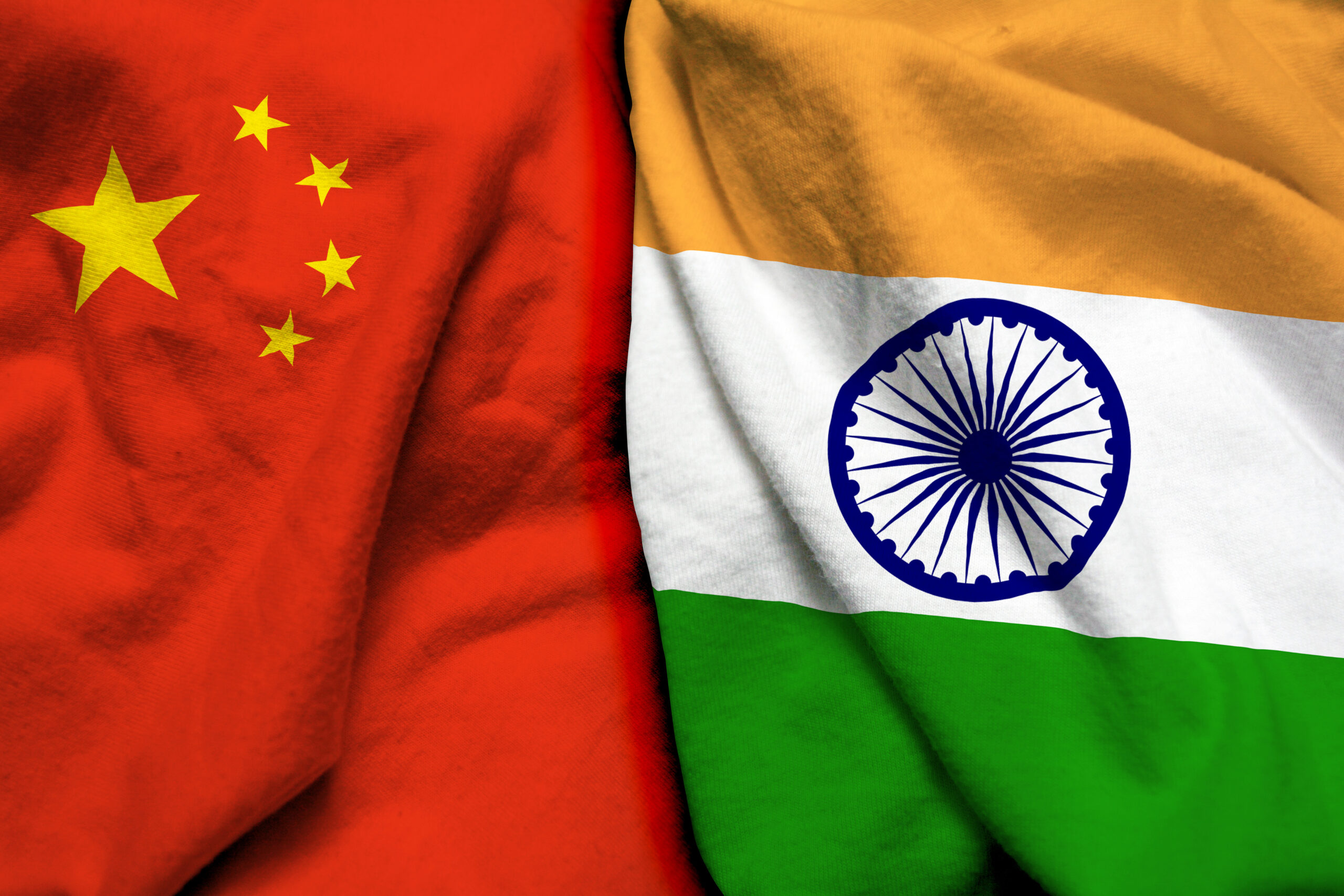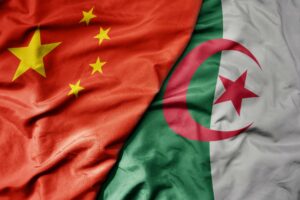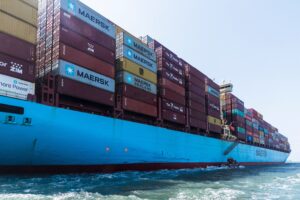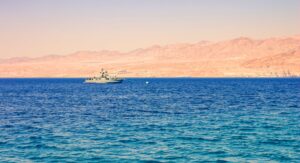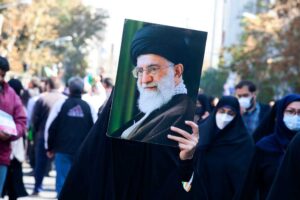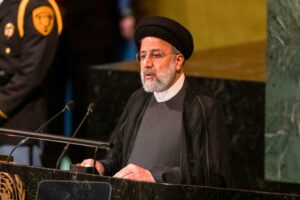China and India’s competition for connectivity with the Middle East during this decade will play a central role in shaping the commercial architecture of the Eurasian landmass and, as a consequence, global geopolitics. China has gained a formidable first-mover advantage through the implementation of its Belt and Road Initiative (BRI), a $1 trillion connectivity infrastructure program that seeks to dominate Eurasian trade flows by creating a new architecture of overland and multi-modal commercial connectivity between China and Europe. Nonetheless, India – with an economy slated to be the world’s third largest by 2030, a population projected to be the world’s largest by 2027, and two strategic coastlines at the heart of the Indian Ocean – holds the potential to offset, at least partially, China’s Eurasian ambitions. To this end, India’s geographic location on the eastern shores of the Arabian Sea provides New Delhi with a critical advantage over Beijing in establishing connectivity with the Middle East.
While the Taliban's takeover of Afghanistan may favor Beijing, the August 2020 normalisation of diplomatic relations between the United Arab Emirates (UAE) and Israel could tilt the geopolitical gameboard of Middle Eastern connectivity heavily in India's favour.
Two recent pivotal events in the wider Middle East – the August 2020 “Abraham Accords” between the United Arab Emirates and Israel and the August 2021 Taliban takeover of Afghanistan – could shift the balance in the contest for Middle Eastern connectivity between Beijing and New Delhi. Occurring one year apart, the geopolitical significance of each of these two events for Middle Eastern connectivity needs to be understood in the context of the other. Having consolidated its control over Afghanistan, the Taliban’s conciliatory posture toward China now offers Beijing the possibility to reach the geographic heartland of the Middle East via Afghanistan and Iran. This new overland connectivity to the Middle East could advance Beijing’s strategic objective to entrench the BRI along the southern rim of Eurasia. While the Taliban’s takeover of Afghanistan may favor Beijing, the August 2020 normalisation of diplomatic relations between the United Arab Emirates (UAE) and Israel could tilt the geopolitical gameboard of Middle Eastern connectivity heavily in India’s favour. The rapidly developing Emirati-Israeli commercial relationship is giving rise to the creation of a UAE-to-Israel railway network via Saudi Arabia and Jordan with Israel’s Haifa port as its Mediterranean terminal. By combining this overland network with the already robust connectivity between India’s western coast and the UAE, India now presides over an emerging Arabian-Mediterranean Corridor to Europe. This multi-modal, commercial corridor raises the prospect of a radical reconfiguration of trade patterns between the Indian Ocean Region, the Middle East and Europe by creating an arc of commercial connectivity spanning Eurasia’s southern rim from India’s Arabian Sea coast to Greece’s eastern Mediterranean coast. In contrast to China’s route, India’s Arab-Med Corridor is anchored in nascent manufacturing value chains. A strategic paradigm shift of enormous geopolitical consequence, India’s new commercial connectivity based on value added production could reshape India’s role in the Middle East and thereby offset China’s growing economic influence across Eurasia’s southern rim.
The importance of Afghanistan for China’s Access Across the 40th Parallel
A fundamental requirement for China’s dominance of Eurasia’s connectivity architecture is to develop overland routes that do not traverse Russian territory to reduce Beijing’s vulnerability to interference from Moscow. Thus, a primary strategic objective for China is gaining access across the 40th parallel north latitude, spanning the city of Kashi in China’s western Xinjiang province and Baku, the Azerbaijani capital and international port city on the Caspian Sea. Crossing the 40th parallel into Eurasia’s southern rim to reach the Middle East is necessary for China to develop China-to-Europe trade routes that do not traverse Russian territory. China’s sole non-Russian option for overland China-to-Europe trade, the Trans-Caspian Corridor, requires ferrying cargo across the Caspian Sea from Central Asia to Baku from where it can be transported via the Baku–Tbilisi–Kars railway across Georgia and Turkey to Istanbul for shipment to the European Union.
With the soon to be completed 32 km Shalamcheh-Basra line connecting the Iranian and Iraqi railway systems, China will have an Iranian-centered rail connectivity route to the Mediterranean Sea via Iraq, Syria, and Lebanon.
An Iranian rail link through Afghanistan would offer Beijing a contiguous and more cost-effective solution. With the soon to be completed 32 km Shalamcheh-Basra line connecting the Iranian and Iraqi railway systems,[i] China will have an Iranian-centered rail connectivity route to the Mediterranean Sea via Iraq, Syria, and Lebanon. Beijing has already established Lebanon’s northern port of Tripoli, located about 19 miles (30 km) from the Syrian border, to be its Levantine trans-shipment hub for this route, upgrading and expanding the port with advanced Chinese cranes, enabling it to handle 480,000 containers per year.[ii] With the establishment of this route, Beijing will also have eliminated its dependence on NATO-member Turkey as China’s sole Mediterranean outlet for its overland connectivity across Eurasia.
In early 2016, the first China–Iran cargo train made its maiden journey from China’s Zhejiang province to Iran in just 14 days, beating by two-thirds the time taken on the maritime route.[iii] To reach Iran, the route traversed (in order) Kazakhstan, Kyrgyzstan, Uzbekistan, and Turkmenistan. The Taliban’s 2021 consolidation of control over Afghanistan and its need for economic engagement with China opens the possibility of another route for China’s Iran-based access to the Mediterranean via the 5-Nation railway corridor project linking China and Iran via Kyrgyzstan, Tajikistan, Afghanistan.[iv] This route is less subject to Russian interference and could be placed more firmly under China’s control. Kyrgyzstan, with a population of 6.6 million, is already in debt to China for upwards of $5 billion.[v] In Tajikistan, Beijing owns about 37.4% of the country’s external debt.[vi] China has already funded a military base in Tajikistan and the two neighbors conduct bilateral joint military exercises.[vii]
India’s Arab-Mediterranean Corridor
The Abraham Accords have given India a new map of Middle Eastern connectivity. One of the early fruits of the 2020 diplomatic normalisation between the UAE and Israel is the rail connection being established from the UAE via Saudi Arabia and Jordan to the Port of Haifa on Israel’s Mediterranean coast. Combined with the trans-Mediterranean maritime link from Haifa to the European mainland at the massive transhipment port in Piraeus, Greece, India’s maritime connectivity with the UAE will soon form part of a larger arc of commercial connectivity extending from India to Greece. Freight rail service from Piraeus through the Balkans and Central Europe means that Indian goods can reach Austria, the Czech Republic and Germany – connecting India to major markets and manufacturing centres of Europe. The India-to-Europe Arab-Med corridor would provide about the same cost reduction for Indian trade as the most optimistic scenarios for the Iranian-based International North-South Transit Corridor (INSTC).[viii] Once a pillar of India’s connectivity policy, the INSTC project centred on Iran’s Indian Ocean port of Chabahar has faced a series of geopolitical and economic setbacks over the course of two decades and remains yet to be realised.
One of the early fruits of the 2020 diplomatic normalisation between the UAE and Israel is the rail connection being established from the UAE via Saudi Arabia and Jordan to the Port of Haifa on Israel’s Mediterranean coast.
In contrast to the INSTC project or the 5 Nation Railway, India’s Arabian-Mediterranean (Arab-Med) corridor is more than a transportation route. As explained in a recent detailed study,[ix] India’s Arab-Med corridor is developing into a genuine commercial corridor anchored in manufacturing value chains. Food production is the corridor’s initial centrepiece as India seeks to become a food basket to the Middle East. India has engaged with the UAE in a massive US$7 billion project to create an India-UAE Food Corridor to ensure the food security of the Emirates and other Middle Eastern Countries.[x] The Saudi Agriculture and Livestock Investment Company (SALIC) has also invested in Indian food production and is eyeing deeper investments.[xi] India’s partnerships with Israeli agritech and water technology firms are helping to increase its agricultural yield and manage its water resources to enable New Delhi to realize its food corridor ambitions. An Indian-Israeli joint venture has begun to manufacture Israeli-designed drip irrigation in India for domestic use and export. [xii]
In parallel, the UAE and Saudi Arabia are working with India’s government and energy majors to develop an integrated hydrocarbon value chain through multibillion-dollar investments in higher value-added petrochemicals manufacturing in India. The Saudi global chemicals giant SABIC, a subsidiary of Saudi Aramco, operates a petrochemicals manufacturing complex in Gujarat and the 45-acre SABIC Technology Centre in Bengaluru. Saudi Aramco, SABIC’s parent company, agreed to acquire a 20 per cent stake in the refining and petrochemical manufacturing operations of Indian conglomerate Reliance for US$15 billion. [xiii] Saudi Aramco, in partnership with the UAE’s ADNOC, is further investing US$44 billion in yet another refinery and petrochemicals manufacturing complex in Maharashtra about 100 kilometres from Mumbai.[xiv]
Similar developments are also occurring with green energy technologies, such as IndianOil’s joint venture with an Israeli start-up to produce aluminium-air batteries for electric vehicles [xv] and joint Israeli-Indian efforts to develop third generation solar technology, particularly more efficient and versatile perovskite-based solar cells.[xvi] Masdar, renewable energy investment arm of the UAE’s Mubadala, has begun investing in both the Israeli and India green energy sectors. Multilateral cooperation among the Arab-Med corridor partners, including Saudi Arabia and Jordan, is likely to occur in the near future.[xvii]
Conclusion
While China’s Belt and Road Initiative is massive, bigger does not always mean better when it comes to strategically significant partnerships. As has been already demonstrated in the Middle East and North Africa region with Morocco’s success in developing a West Africa-to-Western Europe corridor, commercial corridors only emerge where the requisite large investments in port and rail infrastructure are coupled with an industrial base anchored in a manufacturing value chain.[xviii] India’s new connectivity with the Middle East based on value added production is establishing manufacturing value chains that will serve as the foundation of a genuine commercial corridor. Thanks to the Abraham Accords, expanded development of these value chains by India and its Middle East partners, New Delhi will possess an important edge over China in the competition for Middle East connectivity that potentially could change the contours of the strategic architecture of Eurasia’s southern rim.
[i] Richard Clinnick, ” Preparations for Iran-Iraq rail link construction complete”, International Railway Journal, 17 August 2021, https://www.railjournal.com/infrastructure/preparations-for-iran-iraq-rail-link-construction-complete/
[ii]Xinhua, ” Lebanon’s Tripoli port ready to temporarily replace Port of Beirut after deadly blasts”, Xinhua, 7 August 2020, http://www.xinhuanet.com/english/2020-08/07/c_139271048.htm
[iii]Michaël Tanchum, ” Iran and the China–Russia pivot in Eurasia “, East Asia Forum Quarterly, October-December 2019, http://press-files.anu.edu.au/downloads/press/n6144/pdf/book.pdf
[iv] Regional Economic Cooperation Council on Afghanistan, “Five Nations Railway Corridor”, Regional Economic Cooperation Council on Afghanistan, n.d., https://recca.af/?page_id=2086
[v] Reid Standish, ” How Will Kyrgyzstan Repay Its Huge Debts To China?”, Radio Free Europe/Radio Liberty, 27 February 2021, https://www.rferl.org/a/how-will-kyrgyzstan-repay-its-huge-debts-to-china-/31124848.html
[vi] Cabar, “Living in Debt: To whom and how much does Tajikistan owe? “, Central Asian Bureau for Analytical Reporting (CABAR), 17 February 2021, https://cabar.asia/en/living-in-debt-to-whom-and-how-much-does-tajikistan-owe
[vii] Reid Standish, “Tajikistan Approves Construction Of New Chinese-Funded Base As Beijing’s Security Presence In Central Asia Grows”, Radio Free Europe/Radio Liberty, 28 October 2021, https://www.rferl.org/a/tajikistan-approves-chinese-base/31532078.html
[viii] Meena Singh Roy, ”Iran: India’s Gateway to Central Asia”, Strategic Analysis, 36:6 (2012).
[ix] Michaël Tanchum, “India’s Arab-Mediterranean Corridor: A Paradigm Shift in Strategic Connectivity to Europe,” South Asia Scan Issue No. 14, Institute of South Asian Studies (ISAS – Singapore), National University of Singapore, August 2021, https://www.isas.nus.edu.sg/papers/indias-arab-mediterranean-corridor-a-paradigm-shift-in-strategic-connectivity-to-europe/
[x] “UAE firms to invest up to $7 billion in India-UAE food corridor: Indian minister”, Gulf News, 24 July 2019, https://gulfnews.com/world/asia/india/uae-firms-to-invest-up-to-7-billion-in-india-uae-food-corridor-indian-minister-1.1569344178374.
[xi] Economic Times, “Saudi Arabia’s Salic to step up India agri investments”, The Economic Times, 5 March 2021, https://economictimes.indiatimes.com/news/economy/agriculture/saudi-arabias-salic-to-step-up-india-agri-investments/articleshow/81346270.cms
[xii] Press Trust of India, “Skipper-Metzer JV Plant starts operations”, The Week, 3 April,2020, https://www.theweek.in/wire-updates/business/2019/04/30/ccm6-biz-skipper-metzer.html.
[xiii] Sambit Mohanty, “Analysis: Reliance’s move to spin off oil may have cleared decks for Saudi Aramco deal”, S&P Global Platts, 25 February 2021, https://www.spglobal.com/platts/en/market-insights/latest-news/ oil/022521-analysis-reliances-move-to-spin-off-oil-may-have-cleared-decks-for-saudi-aramco-deal.
[xiv] Reuters, “India’s Maharashtra identifies site for Saudi Aramco, ADNOC’s refinery”, Alarabiya News, 19 June 2019, https://english.alarabiya.net/business/energy/2019/06/19/India-s-Maharashtra-identifies-site-for-Saudi-Aramco-ADNOC-s-refinery.
[xv] ANI, “Indian Oil Corporation enters into joint venture with Israeli company Phinergy”, The Economic Times, 18 March 2021, https://energy.economictimes.indiatimes.com/news/oil-and-gas/indian-oil-corporation-enters-into-joint-venture-with-israeli-company-phinergy/81561055.
[xvi] One joint team comprises CSIR’s (Council of Scientific and Industrial Research) Indian Institute of Chemical Technology, Hyderabad and the Hebrew University of Jerusalem and the other is CSIR National Institute for Inter Disciplinary Science and Technology, Kerala and the Technion Israel Institute of Technology, Haifa. Uma Gupta, “India and Israel to work together on perovskite solar cells and lithium sulfur batteries”, PV Magazine, 27 November 2020, https://www.pv-magazine.com/2020/11/27/india-and-israel-to-work-together-on-perovskite-solar-cells-and-lithium-sulfur-batteries/
[xvii] Michaël Tanchum, “India’s Arab-Mediterranean Corridor: A Paradigm Shift in Strategic Connectivity to Europe,” South Asia Scan
[xviii] Michaël Tanchum, “Morocco’s Africa-to-Europe Corridor: Gatekeeper of a trans-regional strategic architecture”, AIES Fokus 8/2020, Austrian Institute for European and Security Policy , 8 July 2020, https://www.aies.at/publikationen/2020/fokus-20-08.php.

